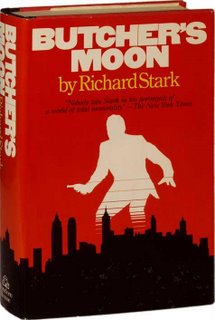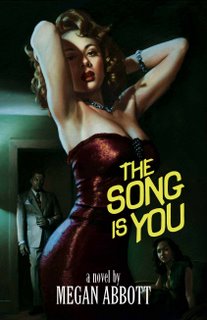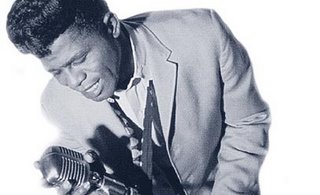
I spent a lot of time at the movies in the late 1970s and early 1980s, at indoor theaters and drive-ins alike. It was a very impressionable period for me (though I had to rely on others to take me, or at least drop me off, not being old enough to drive) and a lot of those movies likely warped me for life. After all, it wasn't exactly THE BAD NEWS BEARS or THE BLACK STALLION I was seeing. It was more likely ROLLING THUNDER or THE KILLER ELITE (and god bless those underpaid ticket sellers who never bothered to check IDs.)
With that background, I was keen on the concept of Quentin Tarantino and Robert Rodriguez's GRINDHOUSE and its attempt to pay homage to the low-budget exploitation films of that time. Double feature - cool! Trailers in between - cooler! Unfortunately, I wasn't that taken by the movie itself. I felt both of the films - PLANET TERROR and DEATH PROOF - were too long by about 20 mins. each. And though I liked quite a bit about DEATH PROOF, I found it relentlessly padded in classic Tarantino style, with endless circular discussions of pop culture and close-ups of women's feet. As great as the last 20 mins. of DP were, I found the first two-thirds somewhat numbing. I can't imagine how it plays now that Tarantino has extended it to feature length for European release (it debuted at the Cannes festival earlier this month). In all, I think the double-feature gimmick would have worked better if the films had been shorter, and the joke not played out so long. And, as writer Jim Harrison has said, after awhile the whole post-ironic irony thing becomes nothing more than "scratching your own tired old ass."
However, this weekend I got to revisit a genuine grindhouse film from that period, 1975's RACE WITH THE DEVIL, starring Peter Fonda and the great Warren Oates. I saw the film on its original release at a Pennsylvania drive-in, paired with BATTLE FOR THE PLANET OF THE APES (the same drive-in where I saw VANISHING POINT and FRENZY, among other films). I hadn't seen it in the intervening 32 years though, and I wasn't sure how it would stand up.
I shouldn't have worried. When it comes to genuine bang-for-your-buck grindhouse value, RACE WITH THE DEVIL delivers.
The plot's as simple as they come, but RACE hits a trifecta of '70s genres. It's a road movie, supernatural thriller and rural action flick all in one. Oates and Fonda are motorcycle designers who head off on vacation in a Vogue motor home (on loving display, inside and out, for most of the film. Its furnishings include an early '70s microwave oven) with their wives, played by Loretta "Hot Lips" Swit and Lara "Dark Shadows" Parker. They're traveling from Texas to Colorado, but on their first night out in the Great Nowhere, they stumble upon a group of Satanists making a human sacrifice. Vacationers flee, Satanists follow. And follow and follow. That's the story. (If it sounds familiar, 1993's JUDGMENT NIGHT, starring Emilio Estevez, is essentially the same movie set in urban Chicago rather than the Southwest.)
Once that chase begins, RACE almost never lets up. Every small town they come to is creepier than the next. Everyone stares at them knowingly and the phones never seem to work. The film hits high gear with a long stretch of pre-MAD MAX highway mayhem, with Satanists in a variety of vehicles trying to run them off the road or clamber aboard the RV to get at the driver, with the vacationers occasionally popping off at them with a shotgun.


If *that* sounds familiar, it should. Watching RACE WITH THE DEVIL, it occurred to me how closely the chase choreography mirrors what George Miller did in the climactic chase of THE ROAD WARRIOR six years later. Of course, the whole concept dates back to John Ford's STAGECOACH in 1939, but the two chases echo each other so closely that someone involved in ROAD WARRIOR had to have seen RACE WITH THE DEVIL at some point. Instead of WARRIOR's tanker truck, the target is an RV, but once the final chase - down a long straight stretch of desert highway - gets under way, the similarities abound. The Satanists drive a bizarre assortment of vehicles - including, in both films, a tow truck - and scramble onto the roof of the RV to attack it from above. Plowing along at high speed, the RV swerves from side to side, pushing smaller pursuing vehicles off the road. Cars careen, crash, tip over and roll a dozen times. Stuntmen fly through the air, earning what hopefully was a generous paycheck. The only thing missing is a gyro-copter dropping rattlesnakes on the bad guys from above. And it all happens in what Roger Corman would have called "a cracking 88 minutes"
Make no mistake, THE ROAD WARRIOR is a far superior piece of cinema in every respect. Its climactic chase is brilliantly conceived and executed, and can take your breath away no matter how many times you've seen it. But its roots are in RACE WITH THE DEVIL, a film which effortlessly encapsulates what Rodriguez and Tarantino were striving so hard to emulate. For an authentic grindhouse experience, look no further.





















